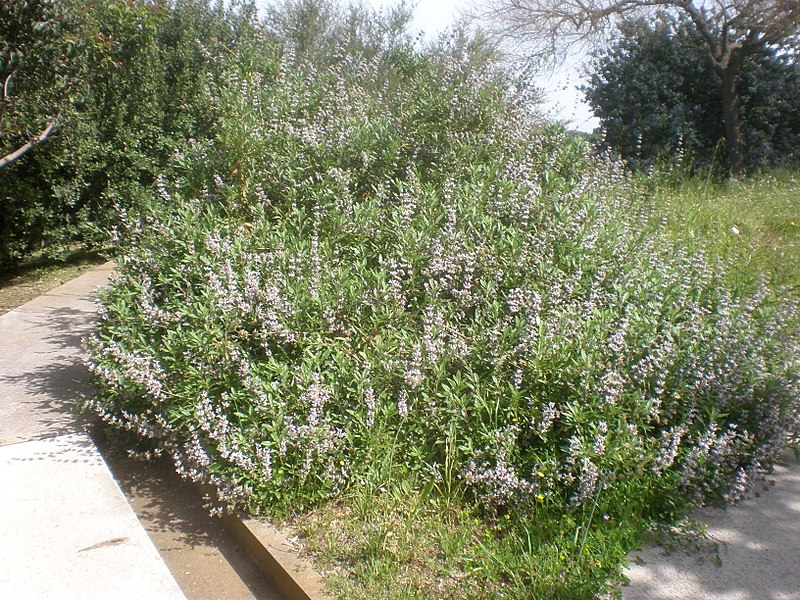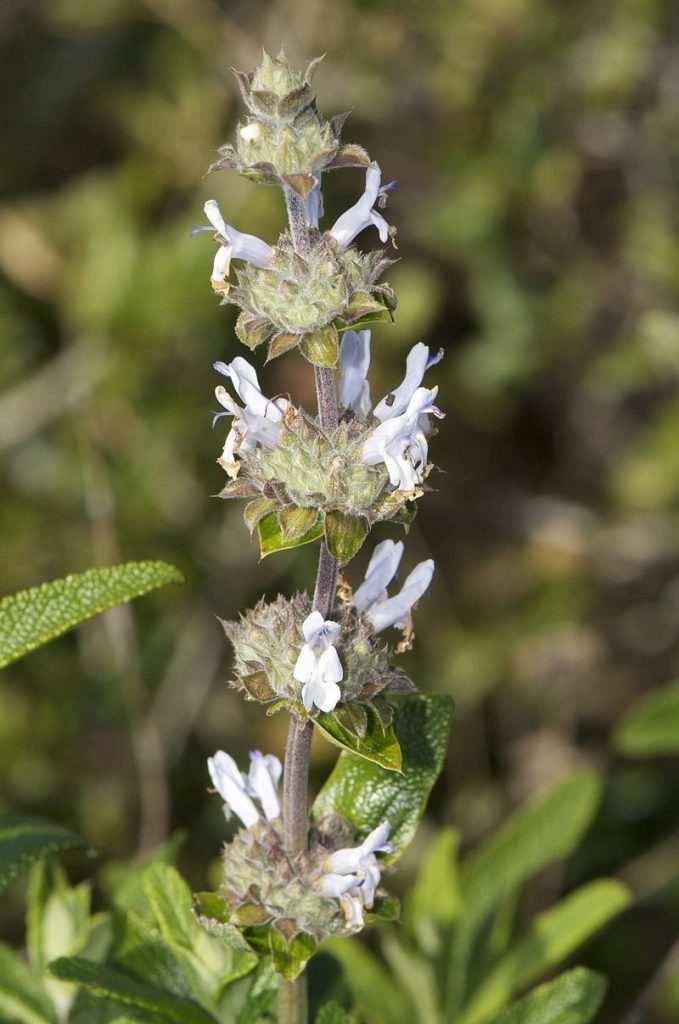
Native to California, Baja, and Mexico, this semi-deciduous shrub is common in the coastal sage scrub and chaparral of Southern California. It is a member of the deadnettle family, Lamiaceae, that also includes mint, coleus, and beebalm. The openly branched, spreading plant grows up to 6′ tall from a shallow root system and has a square stem that is green or purple when young before turning brownish-gray with maturity. The dark green, aromatic leaves are oblong-elliptic to obovate, 1-3″ long, and are wrinkled above and hairy below. They curl during summer drought rather than fall off. Compact whorls of flowers appear in mid spring to mid summer. The whorls are up to 1.5′ across and the flowers are usually pale blue or lavender, rarely pale rose, and have a 2-lobed upper lip and slightly exerted style and stamens. The fruit that follows is composed of 4 tiny nutlets. The flowers provide food for hummingbirds and butterflies and the seeds are attractive to birds. The high drought tolerance of the plants makes them suitable for xeriscapes where they can be used for bank stabilization, groundcovers, and hedges. The genus name, Salvia, comes from the Latin word salvere, meaning to save and refers to the healing qualities associated with some species of the genus. The specific epithet, mellifera, comes from the ancient Greek word μέλι (méli), meaning honey, and the Latin word ferre, meaning to bear, referring to the potential role of the flowers in making honey. Photo Credit Wikimedia Commons

Type: Semi-deciduous shrub
Outstanding Feature: Flowers; drought tolerance
Form: Mounding
Growth Rate: Moderate
Bloom: Compact whorls of blue, lavender, or rarely pale rose flowers from mid spring to mid summer
Size: 3-6′ H x 10′ W
Light: Full sun; tolerates some shade
Soil: Tolerates a variety of soils from loam to sand, dry, well-drained; drought tolerant once established
Hardiness: Zones 8-11
Care: Low maintenance
Pests and Diseases: None of significance
Propagation: Division, seed
Outstanding Selections: None available
Photo Credit: Jerry Kirkhart Wikimedia Commons